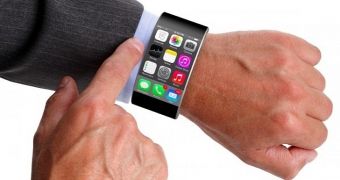The United States Patent & Trademark Office (USPTO) today published an intriguing invention by Apple Inc. dubbed “Mobile Emergency Attack and Failsafe Detection,” which describes a feature that automatically detects when the user is in distress and calls the authorities or sounds an alarm.
According to the abstract of the patent filing, the user would be able to place his / her device into a state that enables it to sense things like sudden shock or simply abnormal behavior from the user, such as lack of interaction with the device.
“A mobile communication device can be placed into an ‘attack detection mode.’ While the device is in attack detection mode, certain events can cause the device to summon assistance automatically,” the filing reads.
Apple offers an example, stating, “While the device is in attack detection mode, if the device's user ceases to interact with the device, then the device can automatically place a telephone call to emergency services (e.g., by calling 911).”
In another embodiment of the invention, Apple says, “If an accelerometer contained within the device detects a sudden shock, then the device similarly can automatically place a telephone call to emergency services.”
In other instances, based on the settings made by the user, the device could react in a distress situation by emitting “a loud audible alarm through the device's speakers at maximum volume regardless of the device's current silence or volume settings, in an effort to attract help from other people who may be nearby.”
The patent is already getting widespread attention from the media, including the Apple pundits at The Loop where Dave Mark proposes using this invention in combination with health sensors. In the case of a diabetic, for instance, the device would call for help if the user became unable to move and get his/her required medication.
What’s more interesting is that Apple doesn’t mention any specific type of devices that would embody this technology. It’s hard to resist the temptation of envisioning this feature in the iWatch, an upcoming smartwatch packed with sensors that Apple is said to be launching later this year.
iPhones generally sit in pockets, bags, purses, etc., people hold them in various unpredictable ways, possibly obstructing any sensors that Apple might place on its enclosure. Not to mention half of the world’s users cover their iPhones with third-party cases.
The iWatch, on the other hand, is something everyone would use in the same identical way. Most importantly, its sensors would have unobstructed access to the user’s bare skin and pulse at all times. Therefore, it’s pretty simple to just connect the dots and see where this invention is heading.

 14 DAY TRIAL //
14 DAY TRIAL //